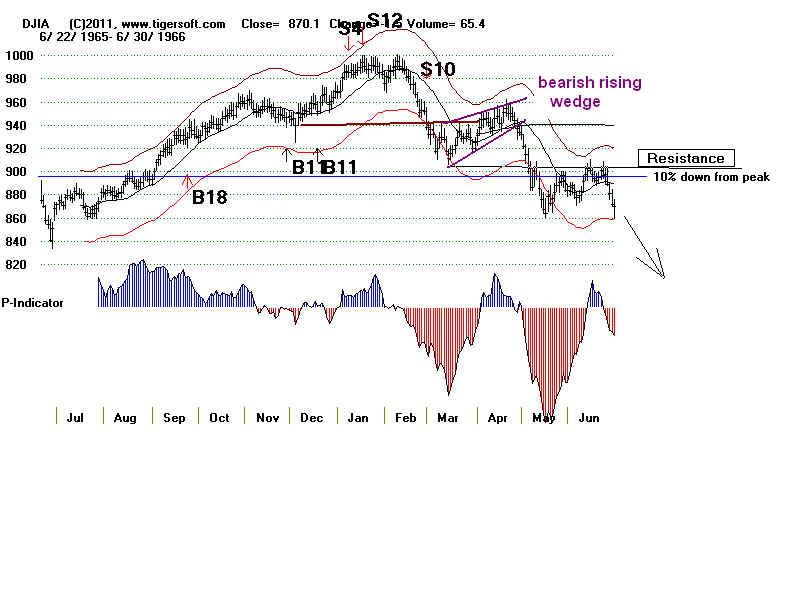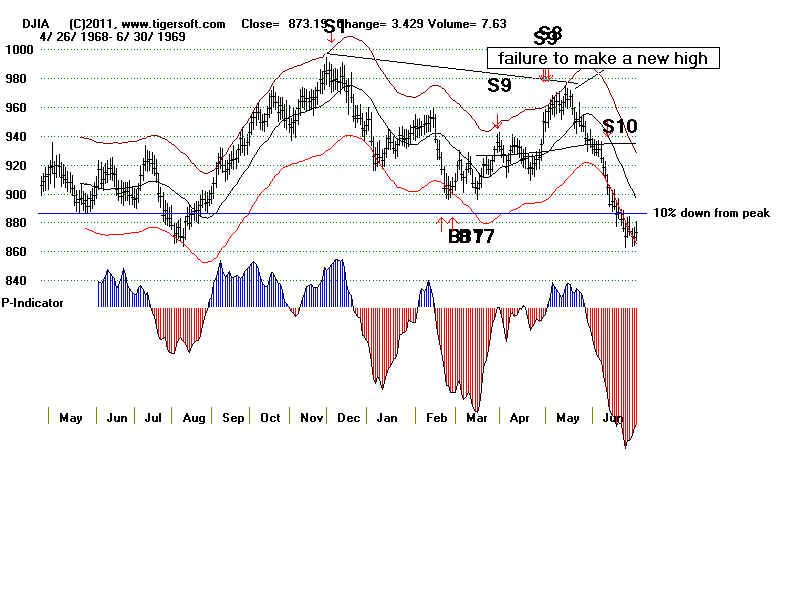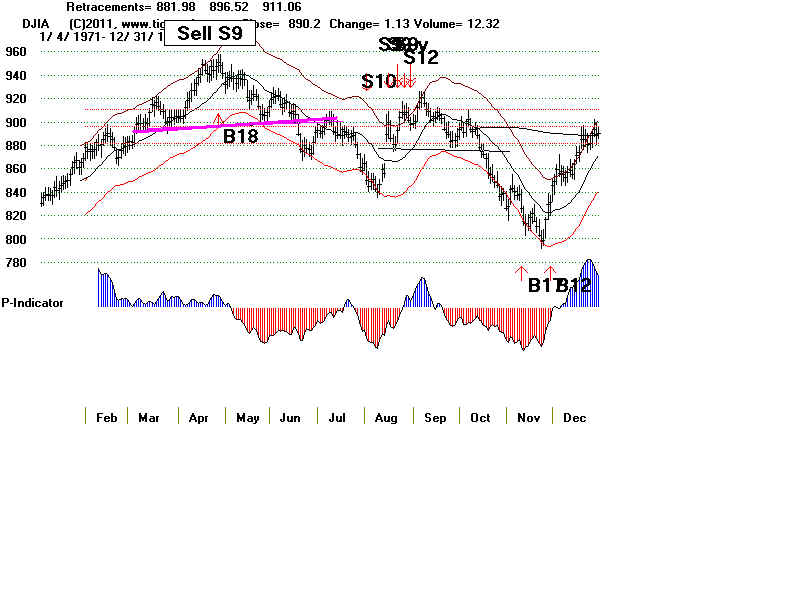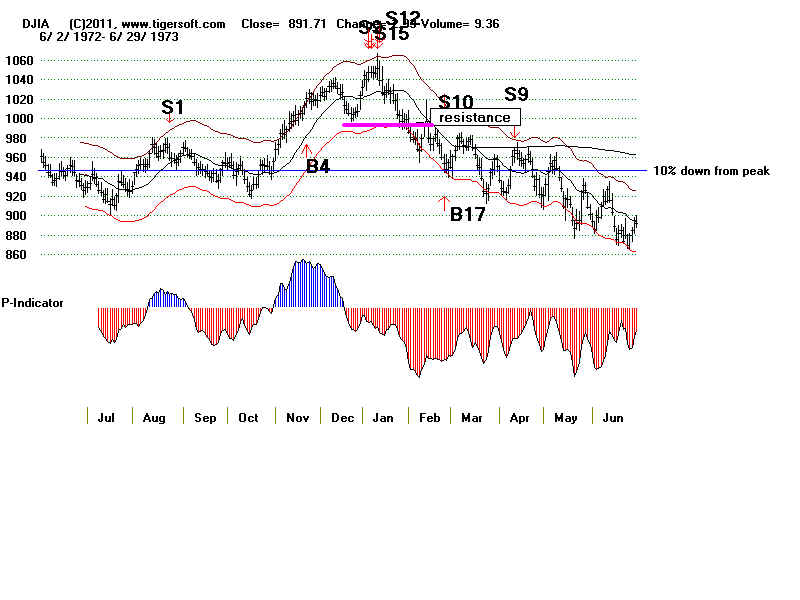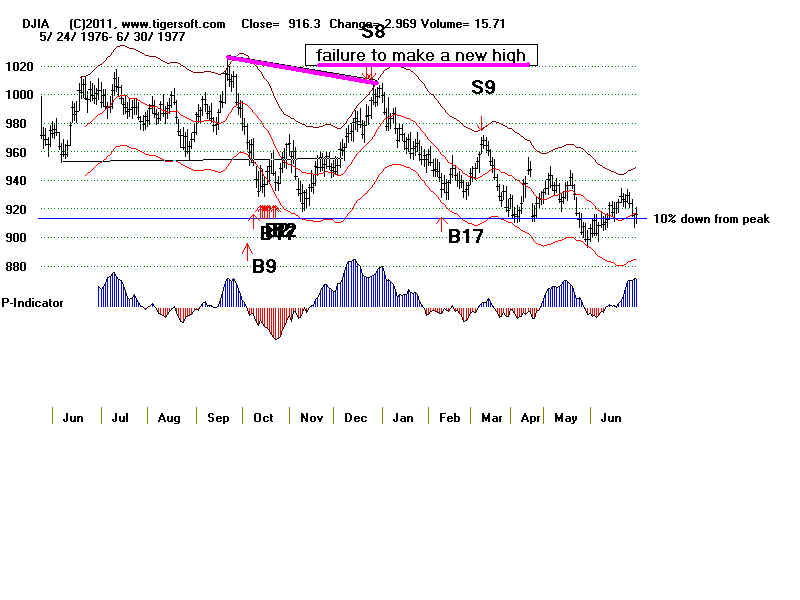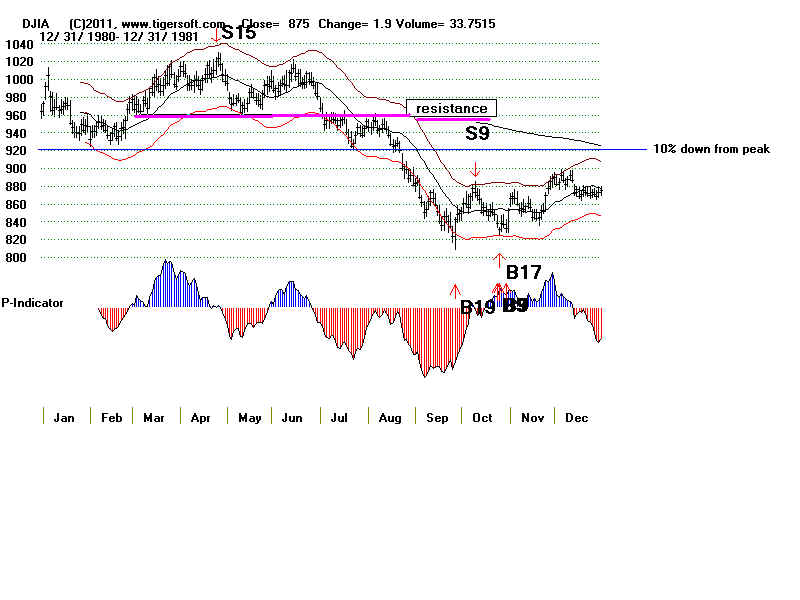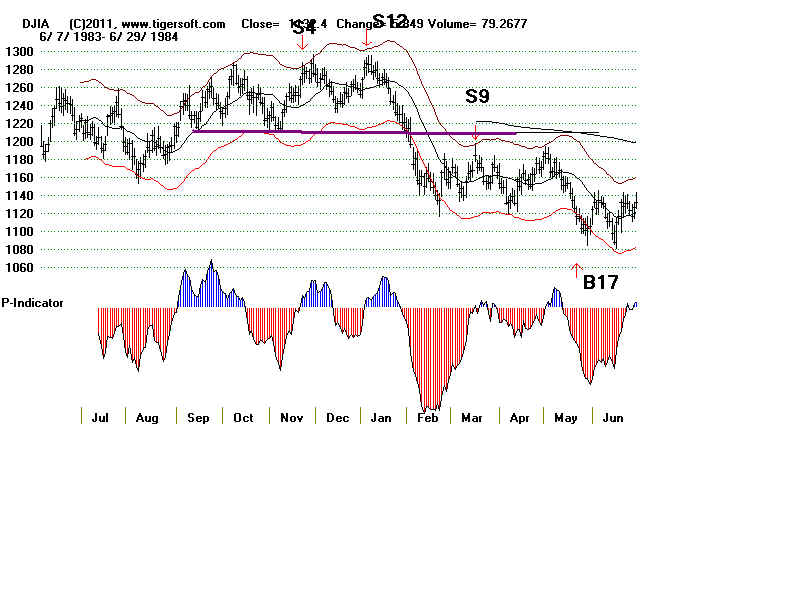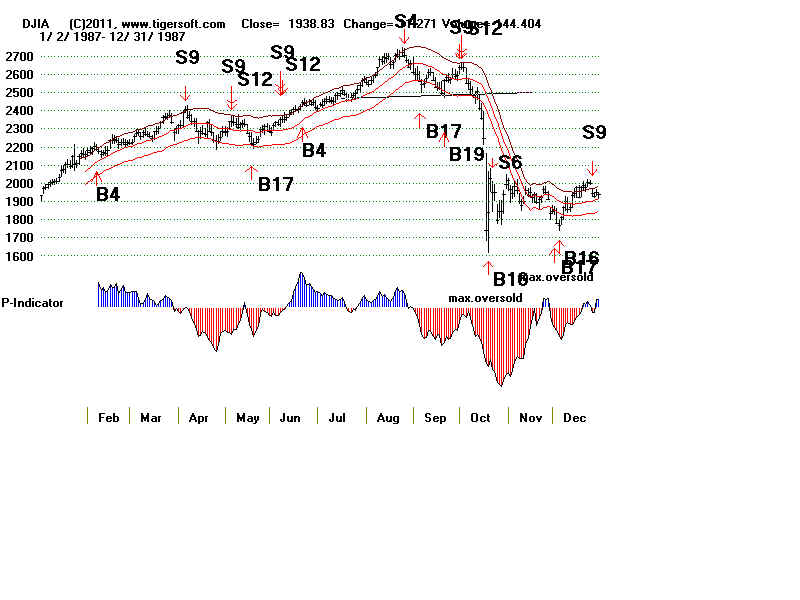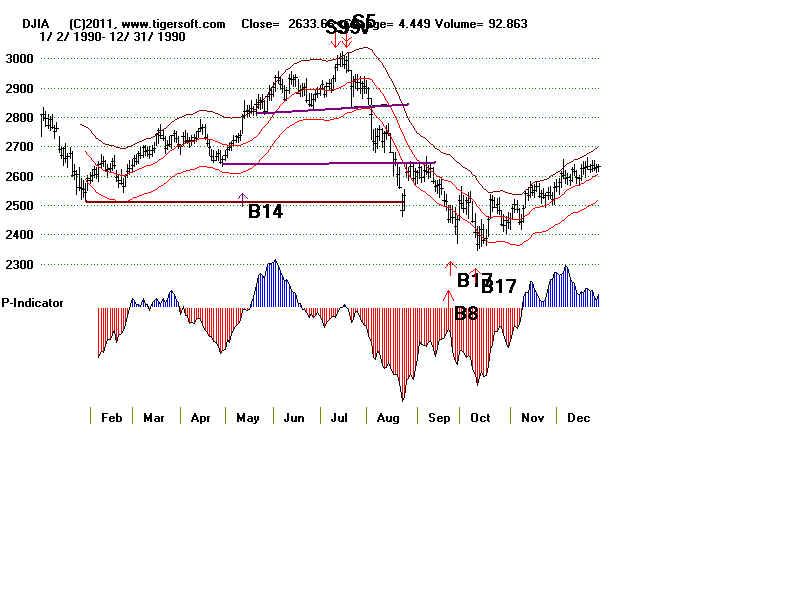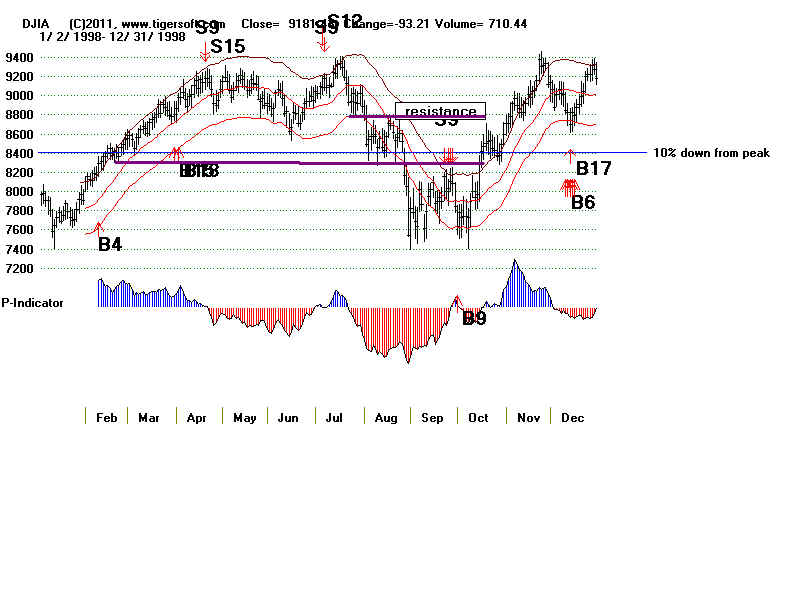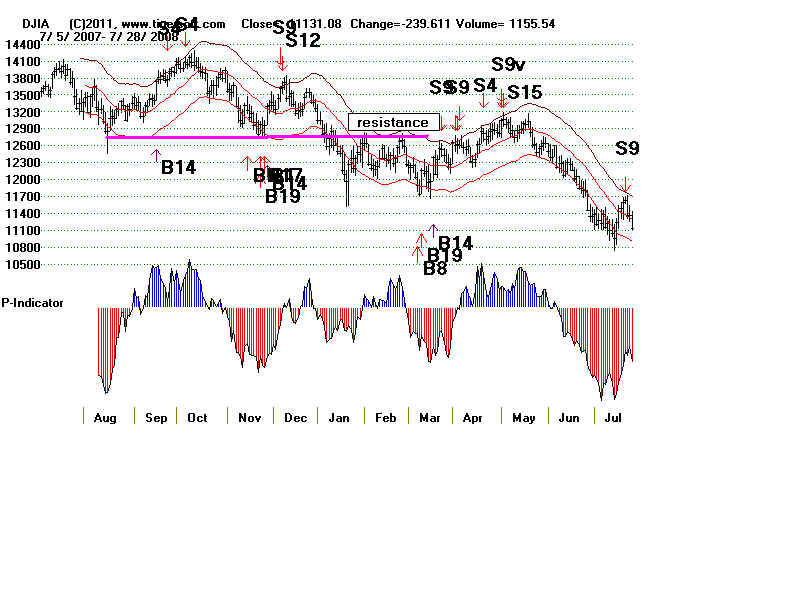 TigerSoft
News Service 8/17/2011
www.tigersoftware.com
TigerSoft
News Service 8/17/2011
www.tigersoftware.com
The Importance of a Full Recovery
after A Sharp Sell-off
following a Long Bull Market
Usually when the DJI falls 13.5-15% from its highs, as it did
in July-August 2011, a bear market follows. The only two exception,
I can readily find, where the DJI turns right back up and resumes
its bull market was in July 1950 and July2010. In both cases
the DJI was down 13.5% exactly from its highs. Continuations
of a bull market are quite commobn when the intermediate-term
decline was only 8%-13%.
Notice how the 1950 and 2010 cases showed very quickly
recovering A/D Lines, that moved up to new highs faster than
the DJI itself.
1950
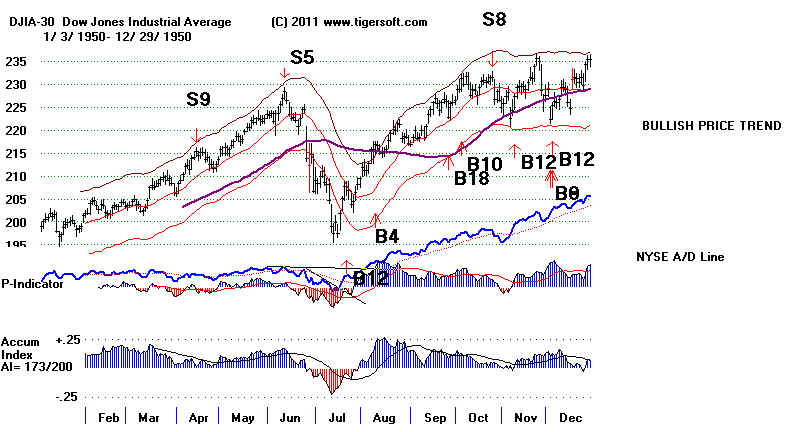 2010
2010 A deeper decline often followes when the the DJI rallies
up from 10%-15% down levels but then fails to get up much
one or more broken support levels. When traders see
this resistance is too much, the decline continues and deepens.
This pattern was seen in 7 of 12 cases from 1966 to 2010
Cases where there is no recovery are, of course, bearish.
But so are cases, where the DJI fails to make a new high.
1) No recovery - Bear Market Scenario
1984, 1987 (2)
2) Failure to Get Much Past Broken Support that Has become Resistance
1966, 1971, 1973, 1981, 1990, 1998, 2008 (7)
3) Failure to make a New High sets up Bearish Declining Tops
1969, 1976, 1990 (3)
